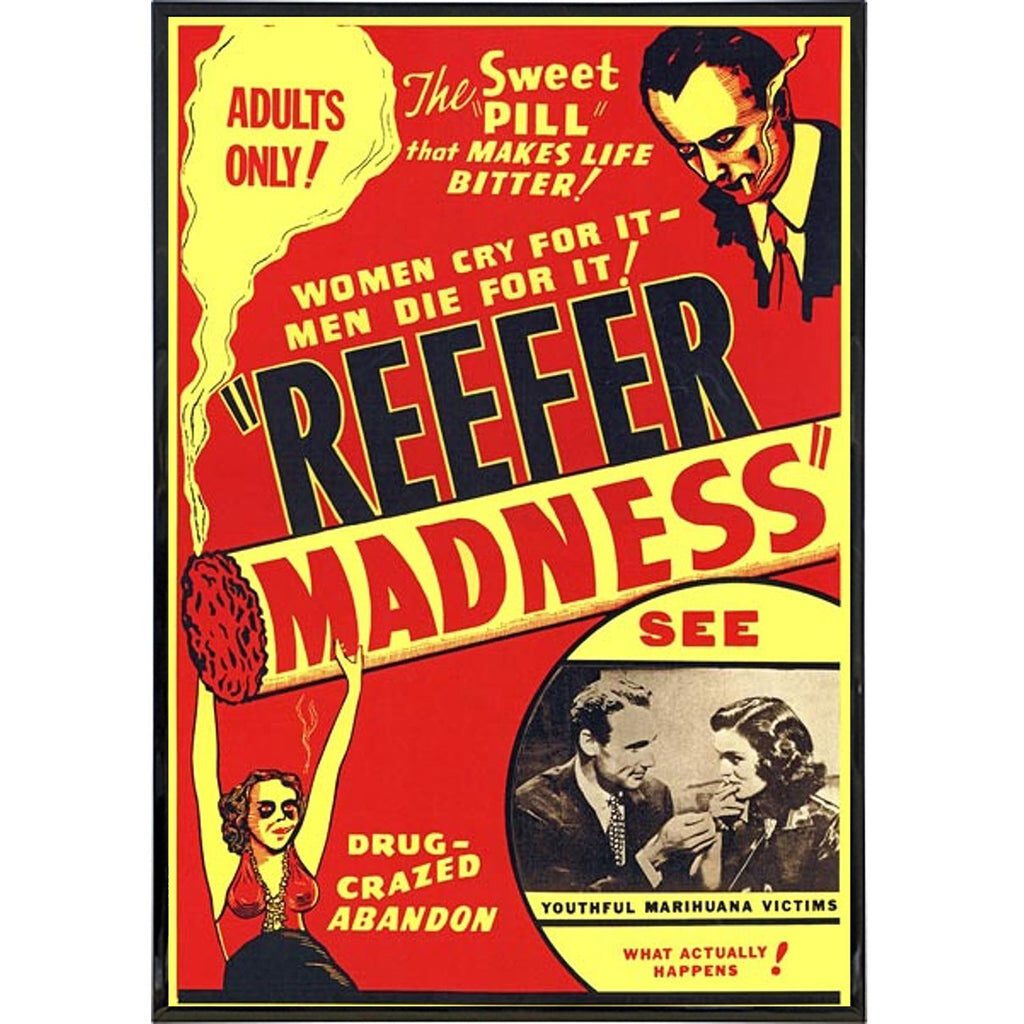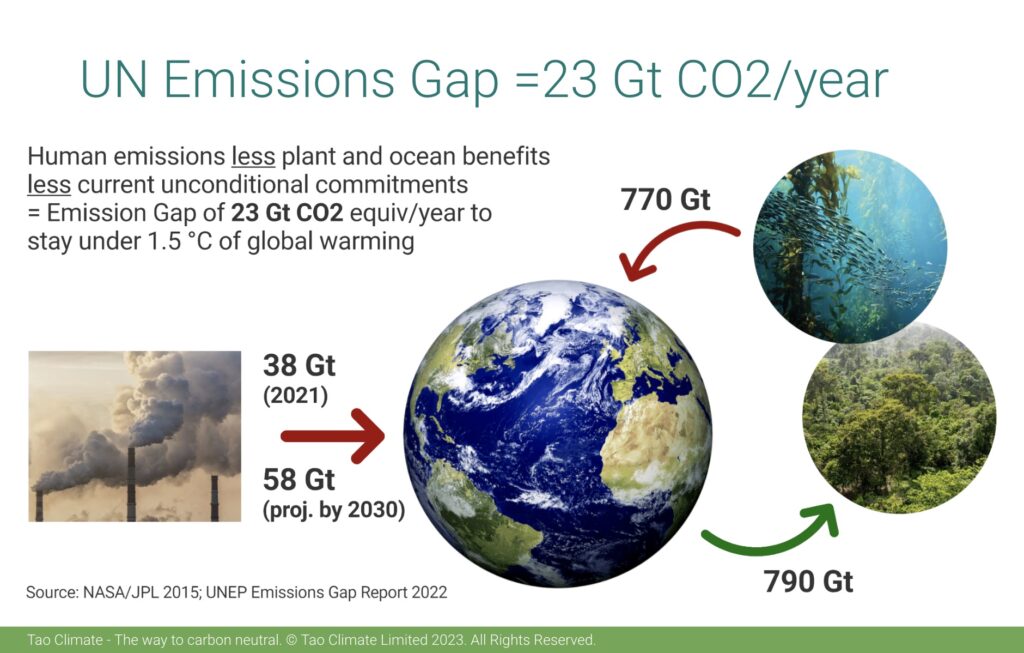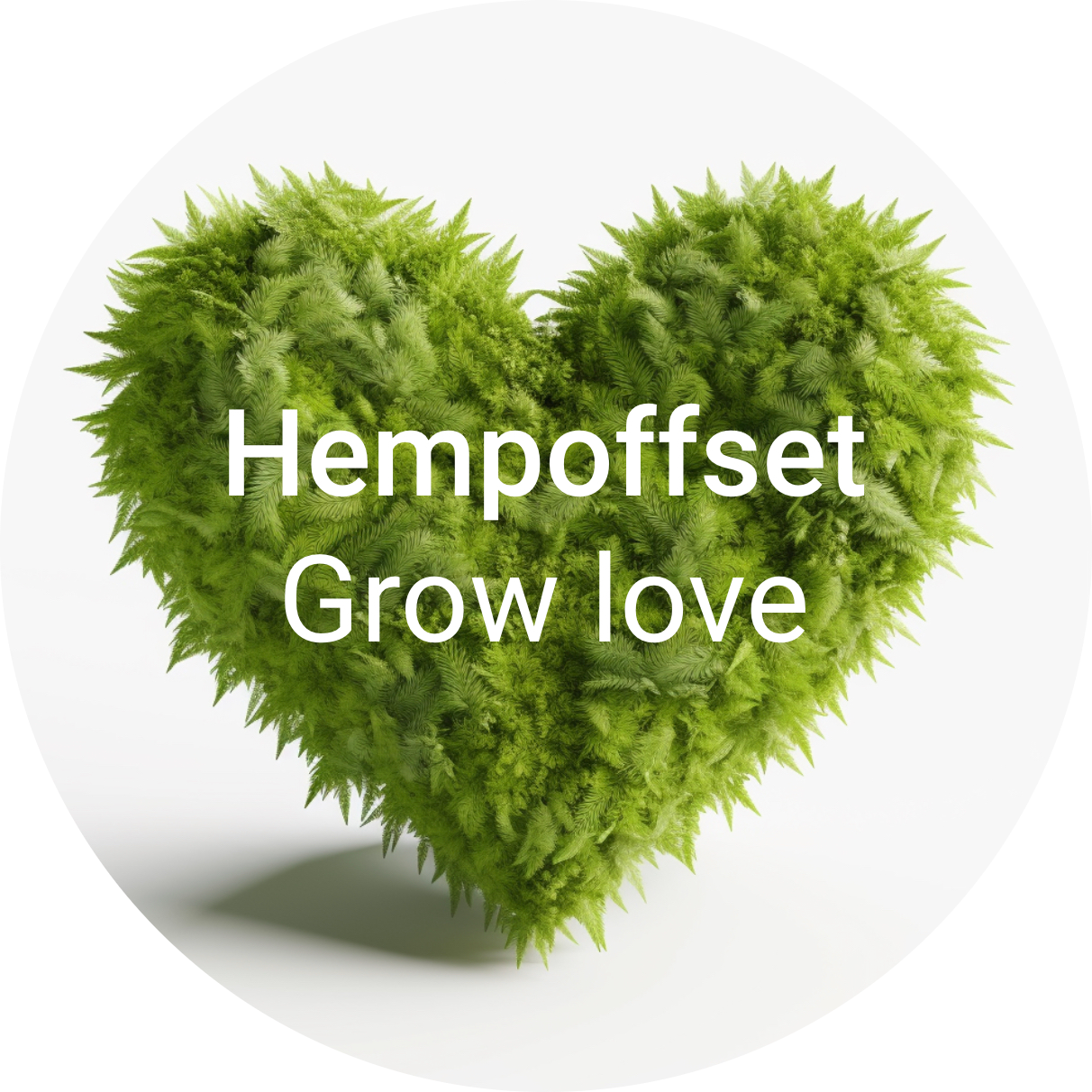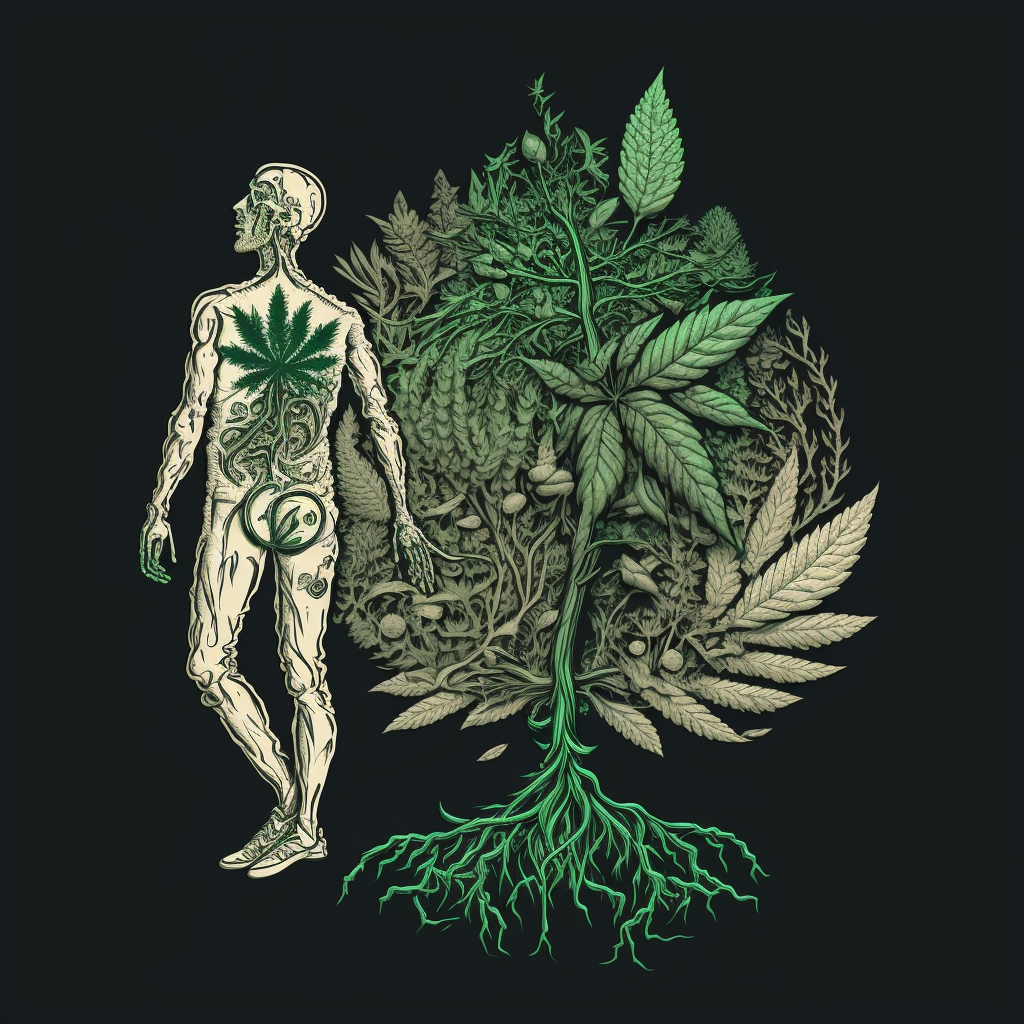A symbiotic relationship is a mutually beneficial interaction between two or more different species, where both species derive some form of benefit from the relationship.
Hemp is a versatile and valuable plant that has been used by humans for thousands of years. Its relationship with humans has been symbiotic, as hemp has provided numerous benefits to us, including food, fibre, and medicine. Moreover, the endocannabinoid system, which is present in all humans and many other animals, interacts with compounds found in hemp, creating a deeper connection between humans and this remarkable plant.
Humans and hemp have a symbiotic relationship, as evidenced by the following three points
- Humans have an endocannabinoid system, proving a physical relationship with the hemp plant. This system is responsible for regulating various physiological processes, including appetite, mood, pain, and sleep. By consuming hemp-derived cannabinoids such as CBD, humans can maintain optimal health and well-being. Hemp plants contain dozens of cannabinoids, and extensive research is needed to unlock the benefits they may deliver to people.
- Hemp was humankind’s first cultivated crop, providing many useful materials for thousands of years. It can be used to produce textiles, paper, construction materials, biofuels, and more. Hemp’s versatility and sustainability make it a crucial resource for building a circular economy that prioritises the well-being of people and the planet.
- Finally, and perhaps most importantly: since the banning of hemp in the USA in 1937, fossil fuel use has grown dramatically, leading to the current existential climate crisis. By legalising hemp at scale, we can replace fossil fuels with renewable hemp-based alternatives and pave the way for a more sustainable future.
Let’s explore the history of hemp and humans, the endocannabinoid system, and the relationship between hemp and climate change.
The history of hemp growing by humans
Hemp has been grown by humans for over 10,000 years. The earliest recorded use of hemp dates back to ancient China, where it was used to make paper, textiles, and medicine. From China, hemp spread to India, the Middle East, and eventually to Europe. The first recorded instance of hemp in Europe was in the year 800 AD when Vikings used it to make sails and rope.
In America, hemp was grown by early settlers, and it was considered an essential crop. It was used to make clothing, paper, and rope. In fact, the Declaration of Independence was written on hemp paper. Hemp farming continued to be an important industry in America until the early 1900s.
However, in 1937, the U.S. government passed the Marihuana Tax Act, which effectively prohibited the cultivation of all varieties of cannabis, including hemp. The act was based on misinformation and fear-mongering, and it dealt a severe blow to the hemp industry in the United States. Hemp farming essentially disappeared in the United States until recently, when it was legalized again in the 2018 Farm Bill.
The Endocannabinoid System
The endocannabinoid system is a biological system that exists in all humans and many other animals. It consists of receptors, enzymes, and endocannabinoids, which are compounds that are similar to those found in the cannabis plant. The system plays a crucial role in regulating various physiological processes, including mood, appetite, pain, and inflammation.
The discovery of the endocannabinoid system has shed light on the relationship between humans and hemp. The compounds found in hemp, including cannabidiol (CBD), interact with the endocannabinoid system, producing a range of effects. For example, CBD has been shown to have anti-inflammatory and pain-relieving properties, while THC is responsible for the psychoactive effects of cannabis.
The endocannabinoid system (ECS) is a complex biological system that plays a crucial role in maintaining homeostasis in the human body. It was first discovered in the 1990s by Dr Raphael Mechoulam, an Israeli organic chemist who had previously isolated THC, the main psychoactive component in marijuana.
In the early 1990s, Dr Mechoulam and his team were studying the effects of THC on the brain when they stumbled upon a previously unknown receptor in the brain. This receptor, which was later named the CB1 receptor, was found to be responsible for the psychoactive effects of THC. But the discovery of the CB1 receptor led to even more questions about how it interacted with the body.
Around the same time, another group of researchers led by Dr William Devane and Dr Lumir Hanus were studying the structure of the brain’s CB1 receptor. They found that the brain contained molecules that were very similar in structure to THC, and that these molecules could bind to the CB1 receptor just like THC did. They named these molecules endocannabinoids, which means cannabinoids that are produced naturally within the body.
Further research revealed that the ECS was not just limited to the brain, but was present throughout the body, including in the immune system, digestive system, and even the skin. The ECS is made up of three main components: endocannabinoids, receptors, and enzymes. The endocannabinoids bind to the receptors, which are found on the surface of cells, and signal to the cells to take specific actions. The enzymes then break down the endocannabinoids so that they can be recycled by the body.
The discovery of the ECS has opened up new avenues of research into the therapeutic potential of cannabinoids. It has been shown to play a role in a wide range of bodily functions, including pain management, inflammation, appetite, and mood regulation. As a result, drugs that target the ECS are currently being developed to treat a variety of medical conditions, including chronic pain, epilepsy, and cancer.
The discovery of the endocannabinoid system has had a significant impact on our understanding of how the body works and how it responds to external stimuli. It has also opened up new possibilities for the development of cannabinoid-based therapies for a wide range of medical conditions.
The relationship between hemp and the endocannabinoid system is complex and multifaceted. Hemp has been used for medicinal purposes for centuries, and its use as a medicine is growing in popularity today. In addition, hemp-derived products, including CBD oil, are becoming increasingly popular as dietary supplements and wellness products.

Reasons for hemp prohibition in the USA
There were several reasons why hemp prohibition happened in the USA in 1937. There was a growing anti-cannabis sentiment in the country, which was fueled by sensationalist media reports and political opportunism. This sentiment was particularly strong in the southern states, where the use of cannabis by African Americans and Mexican immigrants was seen as a threat to white supremacy.
The lumber industry saw hemp as a threat to their profits. At the time, hemp was used to make paper, and it was seen as a cheaper and more sustainable alternative to wood pulp. The lumber industry, which was a powerful lobby in Washington, DC, used its influence to push for hemp prohibition.
There was pressure from the pharmaceutical industry, which was worried about the potential competition from hemp-based medicines. At the time, hemp was widely used in medicine, and it was seen as a threat to the profits of pharmaceutical companies. Finally, the discovery of artificial fabrics made from fossil fuels, such as nylon and polyester, in the early 20th century also led to the lobbying of the US government to ban hemp in 1937. Prior to this, hemp had been a widely used crop for centuries, with many industrial applications, including the production of textiles, paper, and rope.
The Marihuana Tax Act, which effectively prohibited the cultivation of all varieties of cannabis, including hemp, was passed in 1937. The act was based on misinformation and fear-mongering, and it dealt a severe blow to the hemp industry in the United States. Hemp farming essentially disappeared in the United States until recently, when it was legalized again in the 2018 Farm Bill.
Hemp and climate change
Hemp is a valuable crop that has many environmental benefits. It requires less water and fewer pesticides than many other crops, making it a sustainable option for farmers. In addition, hemp has a deep root system that helps to prevent soil erosion and improves soil health. It is also a fast-growing crop.
The hemp industry is experiencing a renaissance, and this is good news for the environment. Hemp is a versatile crop that has many benefits, including its ability to mitigate the effects of climate change. In this blog post, we will explore how the hemp industry is reemerging in time to help stop climate change.

Hemp is a sustainable crop
One of the reasons why hemp is such an important crop for the environment is that it is sustainable. Hemp requires fewer pesticides and fertilizers than many other crops, which means that it is less damaging to the soil and the environment. In addition, hemp has a deep root system that helps to prevent soil erosion, and it can be used to clean up polluted soil.
Hemp is also a fast-growing crop, which means that it can be used to quickly absorb carbon dioxide from the atmosphere. This is important because carbon dioxide is one of the main contributors to climate change. By absorbing carbon dioxide from the atmosphere, hemp helps to reduce the amount of greenhouse gases in the atmosphere.
Hemp is a versatile crop
Hemp is a versatile crop that can be used to make a wide range of products, including textiles, paper, building materials, and even biofuels. This versatility makes hemp an attractive option for farmers and entrepreneurs who are looking for sustainable alternatives to traditional crops and products.
For example, hemp can be used to make biodegradable plastics, which are an important alternative to traditional plastics. Traditional plastics are made from fossil fuels, and they are not biodegradable, which means that they can persist in the environment for hundreds of years. Biodegradable plastics made from hemp, on the other hand, break down quickly and do not contribute to plastic pollution.
Hemp is a growing industry
The hemp industry is experiencing rapid growth, and this is good news for the environment. As more farmers and entrepreneurs turn to hemp as a sustainable alternative to traditional crops and products, the demand for hemp is increasing. This means that more land is being devoted to hemp farming, which helps to reduce the amount of land that is used for other, less sustainable crops.
In addition, the growth of the hemp industry is creating new jobs and economic opportunities in rural communities. This is important because many rural communities have been hit hard by economic downturns in recent years. By providing new economic opportunities, the hemp industry is helping to revitalize these communities.
The hemp renaissance
The hemp industry is experiencing a renaissance, and this is great news for the environment. Hemp is a sustainable and versatile crop that can be used to mitigate the effects of climate change. As more farmers and entrepreneurs turn to hemp as a sustainable alternative to traditional crops and products, the demand for hemp is increasing. This is creating new jobs and economic opportunities in rural communities, and it is helping to reduce the amount of land that is used for other, less sustainable crops. In short, the hemp industry is reemerging in time to help stop climate change, and this is a trend that we should all support.
Join the hemp revolution!
Learn more about the history of humans and hemp on Wikipedia

All about hemp
Hemp resource guide
Hemp Manifesto
Hempcrete
Hemp Carbon Credits
UN hemp report
Latest posts
- Invest in Hemp’s Future: Tao Climate’s AI Space MRV
- 2025 is the Year of Hemp
- Hemp and the City: Our Big Hemp Pitch at the San Francisco XPRIZE Carbon Removal Capital Summit
- Hempoffset / Tao Climate Expands into USA, Joins Hemp Incubator Company Technology Accelerator
- We’re in the XPRIZE Top 100 in the World
Founder and CEO at Hempoffset.com and TaoClimate.com.
Hempoffset works with hemp growers and makers worldwide, to capture and sequester CO2 at scale, while building a sustainable world.
Tao Climate works with companies and individuals that want to measure, minimise and manage their carbon footprints. Tao Climate is the way to carbon neutral.
We are proud members of the Google Startups for Sustainable Development program.

